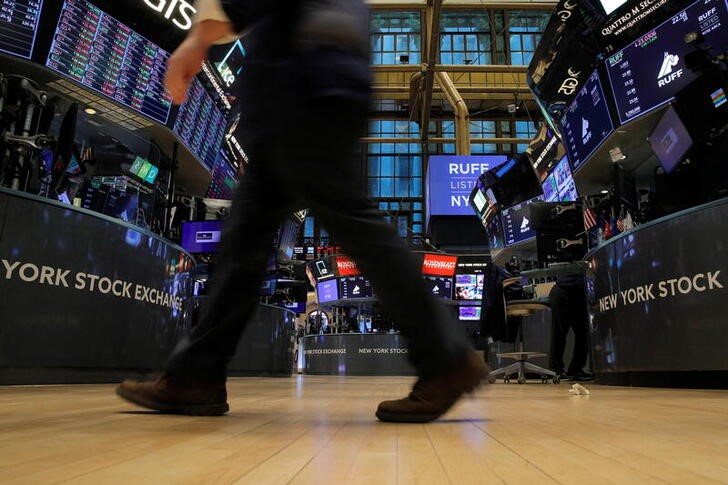One & One Green Technologies stock soars 100% after IPO debut
By Geoffrey Smith
Investing.com -- China fires missiles into the sea around Taiwan as it vents its anger at Nancy Pelosi's visit earlier in the week. Alibaba reports earnings amid reports that its biggest foreign shareholder is unloading its position. The Bank of England is poised to raise interest rates. The U.S. releases weekly jobless claims and monthly trade data, and oil hits a six-month low after another big build in U.S. inventories trumped inaction by OPEC. Here's what you need to know in financial markets on Thursday, August 4.
1. China starts live-fire drills around Taiwan
China launched what is set to be four days of live-fire drills in the sea around Taiwan, venting its fury at the visit earlier this week by U.S. House of Representatives Speaker Nancy Pelosi.
The drills are set to disrupt shipping coming into and out of Taiwanese ports for the next few days, at a time when lingering bottlenecks from China’s own COVID-19 lockdowns are still pressuring supply chains (as reflected in earnings overnight from Adidas).
The visit has also had an impact on cross-border investment decisions, with battery maker CATL (SZ:300750) putting on ice a decision about building a factory in the U.S. to serve Tesla (NASDAQ:TSLA) and other EV makers. However, China’s stock markets recovered after three days of selling, while Taiwan’s only slipped another 0.5%.
2. Jobless claims to shine light on labor market cool-off; trade data due
The U.S. will release weekly jobless claims data at 08:30 AM ET, with expectations firmly set for another rise after the Labor Department’s Job Openings survey for June showed a sharp drop in the number of vacancies.
Analysts expect initial jobless claims to have risen to 259,000 last week. Anything more would almost certainly be the biggest number since mid-January. The Challenger Job Cuts survey for July is also due an hour earlier at 07:30 AM ET.
U.S. trade data for July is also due at the same time as the claims data, while Cleveland Fed President Loretta Mester may deliver a verdict on the numbers when she speaks at 11:00 AM ET.
3. Stocks set to build on Wednesday gains; Alibaba in focus
U.S. stock markets are set to open higher later, building on the gains posted on Wednesday in response to the drop in oil prices after U.S. inventory data (see below).
By 06:20 AM ET, Dow Jones futures were up 65 points, or 0.2%, while S&P 500 futures were up 0.3%, and Nasdaq 100 futures were up 0.4%.
Stocks in focus on Thursday include Alibaba (NYSE:BABA), which is set to report earnings at 07:00 AM ET against a difficult backdrop: the Financial Times reported earlier that its biggest foreign investor, Japan’s Softbank (TYO:9984) – has sold forward over half of its remaining stake, potentially creating a big overhang in the stock in the coming months.
Other companies reporting Thursday include Eli Lilly (NYSE:LLY), ConocoPhillips (NYSE:COP), Datadog (NASDAQ:DDOG), Cigna (NYSE:CI), and Duke Energy (NYSE:DUK). Profitless Tech is represented by Lordstown Motors (NASDAQ:RIDE) and Nikola (NASDAQ:NKLA).
4. Bank of England set (possibly) for biggest rate hike since 1990s
The Bank of England is set to raise interest rates at its regular policy meeting, with the announcement coming at 07:00 AM ET.
Economists are split between expecting a rate hike of 25 or 50 basis points. The latter would represent the Bank’s biggest rate hike since it regained its operational independence under Tony Blair’s government in the 1990s.
While inflation – running at its highest in over 30 years – appears to justify such a step, uncertainty over the outcome stems from the clear recession risk in the U.K., with current indicators pointing to a sharp slowdown owing to an energy-driven cost-of-living crisis.
Governor Andrew Bailey is also likely to be questioned about the implications for monetary policy from the ongoing Conservative Party leadership contest, which has boiled down to promises of what looks like a highly inflationary relaxation of fiscal policy.
5. Oil bounces weakly from 6-month low, hurt by U.S. stock build
Crude oil prices fell to their lowest in six months after a surprisingly large build in U.S. inventories added to evidence that, as always, the cure for high prices is – high prices.
The 4.4 million barrel increase in crude stocks overshadowed the refusal (or inability) of OPEC and its allies to increase supplies to the global market at their meeting on Wednesday. Rights to the promised 100,000 barrel-a-day increase will be distributed among countries which, with the exception of Saudi Arabia, the UAE, and arguably Kuwait, are already pumping at maximum capacity.
By 06:35 AM ET, U.S. crude futures were at $91.61 a barrel, up 1% from their overnight lows, while Brent was up 0.6% at $97.39 a barrel.
